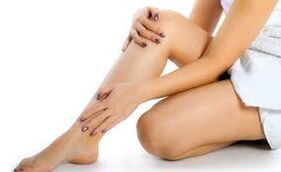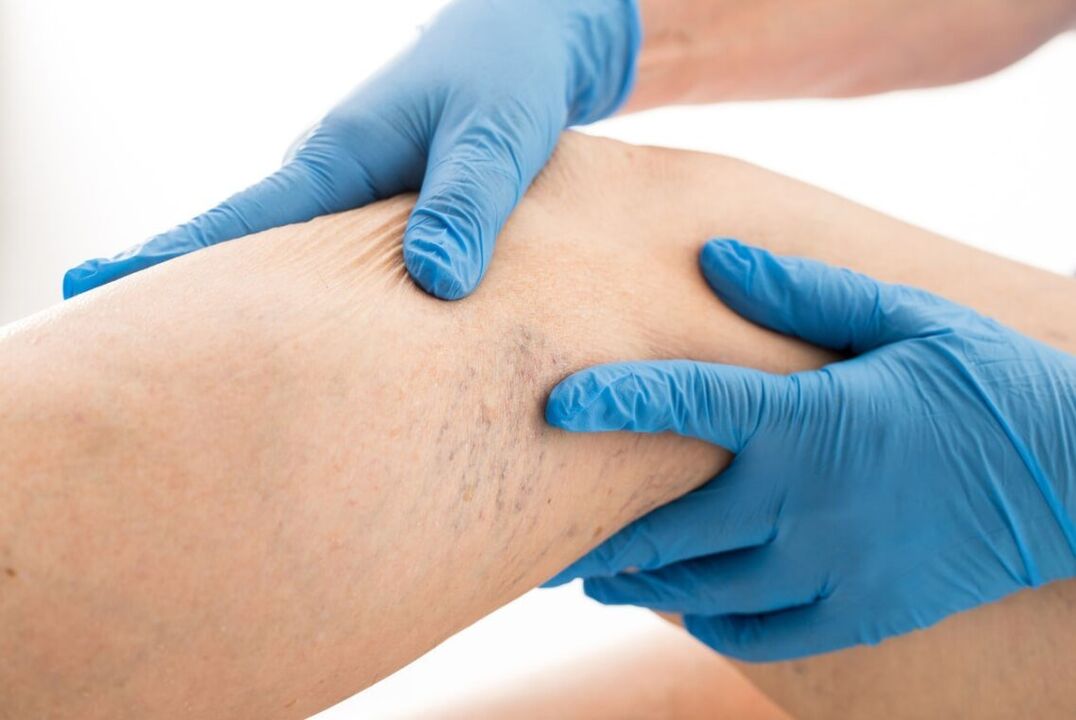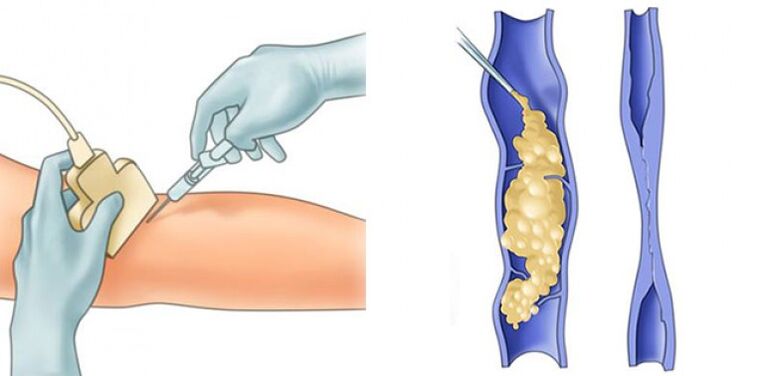Risk factors for the development of varicose veins
- Inheritance.
- Pregnancy is traditionally considered one of the main risk factors for the development of varicose veins, more often (3-4 times) damage to women.
- Obesity is a proven risk factor for varicose veins.At the same time, an increase in body weight index leads to 27 kg/m2 and above it to an increase in the frequency of the disease by 33%.
- The lifestyle has a significant impact on the development and course of varicose veins.In particular, the disadvantageous effect of longer static stress with lifting weights or a motionless stay in the standing position and sitting has been proven
- On the course of the varicose veins, various underwear, different corsets that increase the intra abdominal pressure.
- The high frequency of varicose veins in industrialized countries is to a certain extent due to nutritional features.A high degree of food processing and reduction in the diet of raw vegetables and fruit led to a constant lack of plant fibers, which was necessary for the redesign of the venous wall and chronic constipation, which leads to a permanent increase in the intra abdominal pressure.
- Dismormal diseases are involved in the pathogenesis of varicose veins.Her role in recent years has increasingly increased, which is due to the broad use of hormonal contraceptives, the popularization of hormone replacement therapy during menopause and the treatment of osteoporosis.It has been proven that estrogens and progesterone as well as their derivatives reduce the tone of the venous wall due to the gradual destruction of collagen and elastic fibers.

Clinical image of varicose veins
Varicose veins-Thies is an illness that is not indifferent to the beautiful gender.A varicose veins of the female veins are sick on average three times more often than men.
Signs of varicose veins- Knotted extensions of subcutaneous veins, pain, severity in the legs, swelling of the foot and lower leg, tiredness in the legs at the end of the day.Cramp nodes are often susceptible to the formation of blood clots and infections.Phlebitis can develop - inflammation of blood vessels orThrombophlebitis- Inflammation of the vessels that are complicated by blood clots.In the course of the veins there are hard, very painful cables.The skin changes, loses its elasticity and it becomes tight, dark brown.Urbanities occur in simple injuries.A young woman can become a disabled person at the age of 40.
One of the serious complications of varicose veins is thrombophlebitis - a process in which a thrombus with subsequent inflammation forms on the inner vein wall.This pathology is dangerous in that the blood clot with blood flow releases the lung artery (Tel - the pulmonary artery thromboembolism) and leads to the death of a person.Therefore, varicose veins is a dangerous disease that needs to be treated.
Symptoms of varicose veins (these are the symptoms you should be careful):
1. Pain.
The causes of pain in varicose veins are very, very numerous.A variety of pain in varicose veins is also very rich:
- Hot pulsating pain,
- Night cramps and itching in the muscles,
- Pain when walking
- Pain along the venous tribes,
- General pain and Lymar in the legs
2. swelling in the legs.
3. A feeling of place and the heaviness in the legs.
4 .. Changes in the skin.First, the skin becomes dry, pigmentation - the skin of the legs darker, covered with brown "spots".Later, various dermatitis, eczema and the so -called trophic disorders in the form of poorly healing wounds to the formation of ulcers can combine these symptoms.
5. A involved, elongated varicose veins that protrude over the skin surface of the legs and feet with cylindrical or mixed extensions.
6. Vascular stars (Telangioectasia).Yes, people with varicose veins are also included in the group of patients with the expansion of small veins because the causes of their appearance are the same.
The earliest stages of the development of varicose veins are very difficult to recognize and diagnosed, since there is no main feature in the very early stages of the disease - varicose veins.And the first and earliest symptoms of varicose veins, such as the feeling of the severity of the legs, moderate pain in the legs, increased tiredness, are also found with the early stages of arterial diseases, flat feet, lumbar osteochondrosis.In such difficult cases, it is impossible to make the right diagnosis yourself.It is also necessary that instrumental diagnostic methods with high diagnostics with high precision are required.
In phlebology, such symptoms are connected to the beginning of pathological blood flow by deep veins.
Most of the time, women notice the first signs of varicose veins in spring when they can change the cloakroom, but it is not known where the venous “patterns” come on their feet, legs and hips.The leg is deformed, becomes blue and ugly.
The very first symptoms of varicose veins of the legs, on which you can assume the inserting of varicose veins, are an increase in the vein pattern on the skin of the legs.As already mentioned, this defect is most frequently noticed by young women: they notice wreaths on their legs or hips that were not there before.
And often such symptoms of an initial disease disease are preceded by the occurrence of pain and other unpleasant sensations.Often the first "finds" of Venen are not accompanied by absolutely no unpleasant sensations.
Women are only concerned with this vascular network as a cosmetic defect.Such patients often turn to specialists, then only to eliminate cosmetic complaints.
If you have thin and pale skin, the first symptoms of beginners of varicose veins are particularly clearly visible.These are thin veins that do not even protrude above the skin surface.The first symptoms of varicose veins can also look like a network of thin bluish vessels under the skin.
There may be no other complaints at the beginning of the varicose veins.
The beginning of the development and progress of varicose veins is already evident through varicose nodes that protrude above the skin surface - one or more.This is the main symptom of the beginner's disease.
Frares can most often be detected on the inner surface of the legs or hips.When walking for a long time or for a long time, such a symptom for varicose veins such as tiredness, severity in the legs, manifests a feeling of bursting (often in calves).These symptoms manifest themselves particularly clearly with a longer stay in a seated or standing position.There is also painful or acute pain in places of varicose veins (extended veins), cramps in the calf muscles, especially in the evening and sometimes at night.The first signs of dysfunction in the veins are also manifested by swelling the legs until the end of the day.Edema usually occurs in the evening, especially after a long standing.After the night's rest, swelling disappears completely.
These symptoms of disease extension go through quickly when they relax, especially if they lie down.However, the disappearance or a significant decrease in these symptoms when walking and after the night's sleep are very characteristic of symptoms of disease diseases.
But varicose veins do not withdraw when they are seriously committed.Over time, such symptoms of varicose veins appear as convincing dark blue intradal veins that protrude above the skin surface of the legs and feet and resemble the clusters of a very sophisticated red grapes.All of this is accompanied by bursting pain in the legs and calves, a feeling of heat, the nightly cramps in the calf muscles.Skin changes gradually combine these symptoms.At first the skin becomes dry, it darkens, a pigment appears on it - brown spots.A little later, the so -called trophic disorders begin to participate: poorly healing explosions and even ulcers.
The pain is more and more disturbing, especially in the afternoon or evening.

Treatment of varicose veins
There are many approaches to treat varicose veins, but today the most effective method in treatment is a surgical operation -Venectomy.Medicines and compression therapy are used as auxiliary methods in surgical treatment and independent methods in the early stages of varicose veins and the presence of contraindications for surgical treatment.
The treatment of varicose veins should be complex and individual, mostly a combination of conservative and surgical treatment.
Types of surgical treatment of varicose veins:
- Classic phlebectomy
- Laser coagulation
- Combined method
Modern medicine uses laser surgery (EVLC) to treat varicose veins.This method includes intravascular laser coagulation.EVLC- An intravascular laser is an expanded method for treating varicose veins.The laser exposure is a process that occupies an intermediate position between non-surgeon and surgical methods for the treatment of the disease.
WouldEVLC- This is a radical but low -traumatic type of treatment.After such interventions, the patient can leave the clinic in a good physical condition after a few hours.Such treatment takes place under operating conditions and using local anesthesia.
The most modern laser devices are currently being used.At the same time, the patient's problem areas with the optimal wavelength (1470 Nm) are exposed to a laser.The radial lights used offers reliable closure of the veins.In this case there are no side effects and the surrounding tissue do not heat up.For this reason, the number of bruises is reduced after such an operation and the postoperative period is easy and painless.
The operation is not accompanied by cuts, leaves no pigmentation and scars.After 3 weeks after the operation, the patient's legs achieve a normal look without a varicose node.Such treatment of varicose veins is widespread in western countries.For large varicose veins, EVLC is used in combination with the microflezebectomy.In this way you can achieve a good aesthetic result.

Advantages of using EVLC:
- Quick recovery
- Little trauma
- High cosmetic effect
- Lack of markings on the skin of distant varicose veins
- The treatment takes place under local anesthesia (tumor anesthesia)
- Lack of pain syndrome
- High therapeutic effect
Possible complications
Treatment with laser technology has practically no complications.Rare complications include burns, the likelihood of venous thrombophlebitis and paraesthesia in the field.Experienced phlebologists guarantee a qualitative result.
Such operations do not violate the patient's lifestyle.After the intervention, it is necessary to wear compression stockings to put a slight pressure on the veins.Special products are applied to the area of particularly large varicose nodes - cotton rollers or latex pads.According to the laser process, the patient is recommended to take walks every day.
The treatment of varicose veins with a laser ensures that the ability to work and physical activity.

























